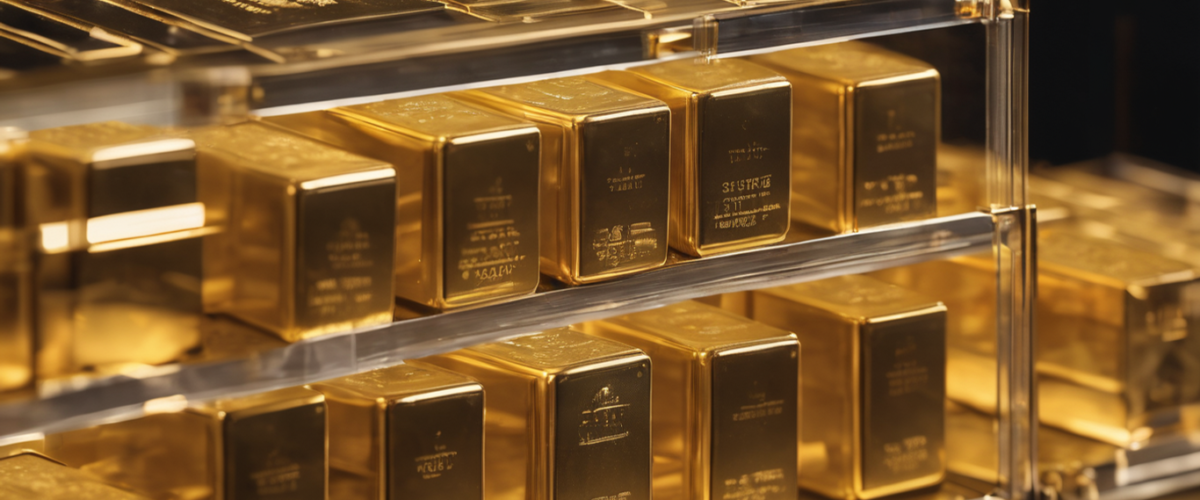Welcome to the world of investing in gold! Whether you are a seasoned investor or just starting out, gold is an essential asset to consider in your portfolio. With its timeless value and stability, gold has been a popular investment choice for centuries. In this beginner’s guide, we will cover everything you need to know about investing in gold, from the basics to the different types of physical gold available. So sit back, relax, and get ready to learn all about the shiny yellow metal that has stood the test of time.
When it comes to investing in gold, there are two main options: buying physical gold or investing in gold through other means. If you’re interested in owning physical gold, there are several things to consider. You can purchase gold bars or coins from reputable dealers or even buy them directly from a bank. It’s important to do your research and make sure you’re buying from a reputable source. Once you have your physical gold, you will need to determine how to store it securely. This could include purchasing a safe or renting a safety deposit box.
If you’re not interested in owning physical gold, there are still ways to invest in this precious metal. One option is investing in gold stocks, which are shares of companies that mine and produce gold. Another option is a gold IRA account, which allows you to invest in physical gold through a retirement account. Lastly, there are also gold ETFs (exchange-traded funds), which are investment funds that hold physical gold or invest in gold-related assets.
When it comes to the current state of the gold market, it’s important to keep an eye on factors that can impact the price of gold. These can include economic conditions, political events, and even global crises. Gold is often seen as a safe-haven investment during times of uncertainty, so it’s important to stay informed and make well-informed decisions when investing in gold.
In terms of risks and rewards, it’s important to remember that like any investment, there are potential risks associated with investing in gold. The price of gold can be volatile, and it’s important to have a diverse portfolio to mitigate risk. However, there can also be significant rewards for those who invest in gold wisely. It has historically been a valuable asset and can provide a hedge against inflation.
Some may argue that investing in gold is not worth the risk and that there are better ways to diversify a portfolio. It’s important to do your own research and consult with a financial advisor before making any investment decisions.
Other Investment Options
If you’re interested in investing in gold but don’t want to deal with the hassle of buying and storing physical gold, there are other options available to you. These include investing in gold stocks, gold IRA accounts, and gold ETFs.
Gold Stocks: Investing in gold stocks allows you to indirectly invest in gold through companies that mine and produce gold. This can be a more convenient option for those who are not interested in physical gold ownership. However, it’s important to do your research and choose reputable companies with strong financials and a history of success.
Gold IRA Accounts: A gold IRA account is a retirement account that allows you to invest in physical gold, including bars and coins. This can be a smart way to diversify your retirement portfolio and protect against inflation. Keep in mind that there are strict rules and regulations surrounding gold IRA accounts, so be sure to do your due diligence before opening one.
Gold ETFs: Gold ETFs (exchange-traded funds) are investment funds that track the price of gold. They can be bought and sold on stock exchanges, making them a more liquid option compared to physical gold. However, keep in mind that ETFs come with management fees, which can eat into your returns.
The Current State of the Gold Market
When it comes to investing in gold, understanding the current state of the gold market is crucial. The market for gold is constantly changing and there are a number of factors to consider before making any investment decisions.
One factor to consider is the overall economy. Gold is often seen as a safe-haven asset during times of economic uncertainty. When the stock market is volatile or there are concerns about inflation, many investors turn to gold as a way to protect their wealth.
Another factor to consider is the demand for gold. While gold has traditionally been used as a hedge against inflation, it also has many industrial uses. This means that the demand for gold can fluctuate depending on the state of the global economy.
In addition, geopolitical events can also impact the price of gold. Political instability or tensions between countries can cause investors to seek out safe-haven assets like gold, driving up its price.
Finally, it’s important to keep an eye on the supply of gold. Mining companies play a significant role in the supply of gold, and any disruptions or changes in production can have an impact on its price.
Overall, when considering investing in gold, it’s important to stay informed about the current state of the market and how various factors may influence its price. By understanding these factors, you can make more informed decisions about your investments and potentially maximize your returns.
Buying Physical Gold
When it comes to investing in gold, there are a variety of options available to you. One of the most common ways to invest in gold is by buying physical gold, also known as bullion. This can include gold bars, coins, or even jewelry made of pure gold. However, before diving into this type of investment, there are a few important things you need to know.
The first thing to consider is how you plan on purchasing and storing the physical gold. You can buy gold bars and coins from reputable dealers or through online platforms. It’s important to do your research and only buy from trusted sources to ensure the authenticity and purity of the gold.
Once you have purchased the physical gold, you will need to decide on a safe and secure way to store it. This can include storing it at home in a safe or bank deposit box, or using the services of a custodian who specializes in storing precious metals.
Another important factor to consider when buying physical gold is the cost. In addition to the actual price of the gold, you may also need to pay for shipping, insurance, and storage fees. These costs can add up quickly and should be factored into your overall investment strategy.
It’s also important to keep in mind that physical gold can be subject to market fluctuations and may not always provide a high return on investment. However, it can serve as a valuable hedge against inflation and economic uncertainty.
Lastly, before making any investment decisions, it’s crucial to understand your own risk tolerance and financial goals. Investing in physical gold may not be suitable for everyone and it’s important to consider all factors before making a purchase.
Risks and Rewards of Investing in Gold
Investing in gold can be a profitable venture, but like any investment, it comes with its own set of risks and rewards. Before diving into the world of gold investing, it’s important to understand these factors so you can make informed decisions that align with your investment goals.
Risks of Investing in Gold
One of the biggest risks associated with investing in gold is its volatility. Like all commodities, the price of gold can fluctuate greatly depending on various factors such as supply and demand, economic conditions, and geopolitical events. This means that your investment in gold may not always yield the desired returns and can even result in losses.
Another risk to consider is the storage and insurance costs associated with physical gold. Unlike other investments that can be easily held in digital form, physical gold requires proper storage to prevent theft or damage. This can add to the overall cost of owning gold and may affect your potential profits.
Rewards of Investing in Gold
Despite the risks, investing in gold also offers potential rewards. Gold has a long history of being a valuable asset and has often been seen as a safe haven during times of economic uncertainty. This means that it can serve as a hedge against inflation and offer protection to your portfolio during market downturns.
Additionally, gold has a limited supply which makes it a scarce resource and can lead to its value increasing over time. This is especially true in times of high demand or when other investments are underperforming.
What You Need to Know
Before investing in gold, it’s important to assess your risk tolerance and understand how it fits into your overall investment strategy. You should also research and compare different investment options such as physical gold, gold stocks, and gold ETFs to determine which aligns best with your goals.
It’s also crucial to stay informed about the current state of the gold market and be aware of any potential risks that may affect your investment. By understanding the risks and rewards associated with investing in gold, you can make informed decisions and potentially reap the benefits of this precious metal.
Investing in gold can be a lucrative opportunity for new investors, but it’s important to understand the various options and strategies available. Whether you choose to buy physical gold or explore other investment options, it’s important to stay informed about the current state of the gold market and be aware of potential risks and rewards. Remember to always do your own research and consult with a financial advisor before making any investment decisions.



